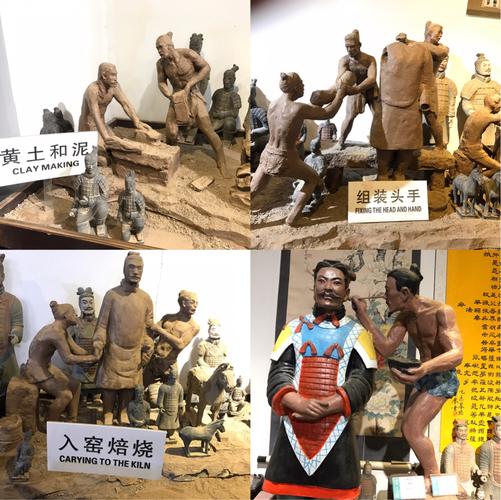
When were the Terracotta Army figures made?
The Discovery of the Terracotta Army
The Terracotta Army is one of the most significant archaeological discoveries of the 20th century. The figures were discovered in 1974 by local farmers digging a well in Lintong County, outside Xi'an, Shaanxi, China. The discovery prompted an extensive archaeological excavation that continues to this day.
The Purpose of the Terracotta Army
The figures were created to accompany the tomb of Qin Shi Huang (259-210 BCE), the first emperor of a unified China. The tomb itself is located about 1.5 kilometers east of the Terracotta Army pits and remains unexcavated. The army was meant to protect the emperor in the afterlife and reflects the importance given to military might during the Qin dynasty.
The Creation of the Terracotta Army
Dating back to the late 3rd century BCE, the creation of the Terracotta Army was a massive undertaking. It is estimated that over 700,000 artisans and laborers worked for nearly 40 years to complete the project. The figures were crafted using local clay, which was fired in kilns to harden.
The Figures
The figures of the Terracotta Army are incredibly lifelike and detailed. Each figure has unique facial features, hairstyles, and expressions. The figures vary in height according to their rank, with the tallest being the generals, who stand over six feet tall.
The figures represent different roles within the Qin army, including:
- Infantry: These are the most numerous figures, representing foot soldiers armed with various weapons like spears, swords, and crossbows.
- Archers: Kneeling and standing archer figures showcase the importance of ranged combat in the Qin army.
- Chariot drivers and warriors: These figures are depicted riding or standing beside bronze chariots, reflecting the elite status of charioteers in ancient warfare.
- Cavalry: These figures represent the mounted warriors of the Qin army, highlighting the role of horses in their military campaigns.
- Generals and officers: These figures are identifiable by their elaborate armor, headwear, and commanding poses.
Beyond the human figures, the Terracotta Army also includes:
- Horses: Life-sized terracotta horses, often depicted in teams of four, were created to pull the chariots and accompany the cavalry.
- Weapons: Thousands of bronze weapons were buried with the army. Remarkably, many of these weapons were found in pristine condition, showcasing the advanced craftsmanship of the time.
The Significance of the Terracotta Army
The Terracotta Army provides invaluable insights into the military organization, weaponry, and cultural practices of the Qin dynasty. The sheer scale and detail of the figures are a testament to the power and ambition of Qin Shi Huang. Today, the Terracotta Army is a UNESCO World Heritage site and one of the most popular tourist destinations in China.
FAQs
Q: What material are the Terracotta Army figures made of?
A: The figures are made from terracotta, a type of earthenware clay that is fired at high temperatures.
Q: How many figures are there in the Terracotta Army?
A: It is estimated that there are over 8,000 terracotta soldiers, horses, and chariots buried in the three pits.
Q: Why is the Terracotta Army so significant?
A: The Terracotta Army provides invaluable information about the military organization, weaponry, and culture of ancient China during the Qin dynasty. The realistic detail of the figures and the vast scale of the project make it a unique and awe-inspiring testament to human history.